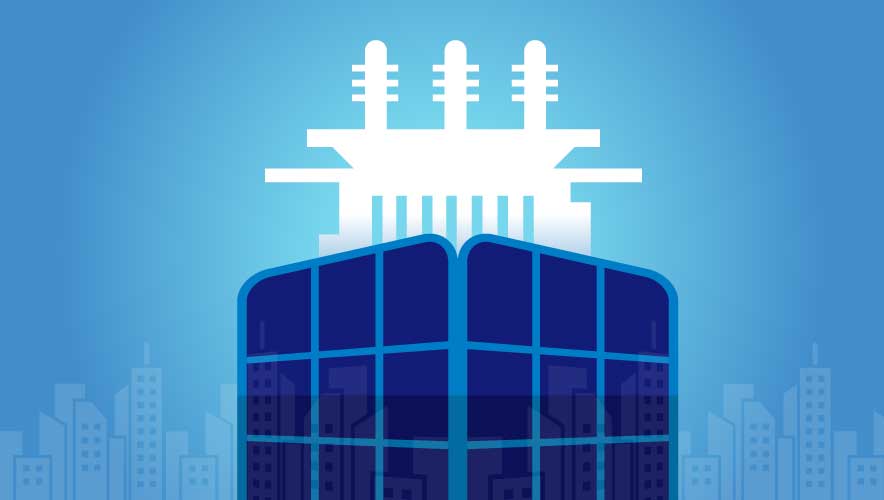Becoming More Reliable and Resilient with Enhanced Substation Security
Substation security is at a critical point. Given the U.S. Energy Information Administration estimates that electricity consumption will increase up to 15 percent by 2050, to handle the demand utilities may need to build substations in isolated or heavily populated areas.
Remote and urban areas provide individuals—or groups—multiple vantage points for attacks and several escape routes. This can complicate the nature of taking adequate security measures to protect energy transmission.
Current approaches to physical security, such as chain link fences or concrete wall structures, are limited in their ability to protect substation equipment. Not only do these measures leave equipment vulnerable to attacks from above, but their use may not be readily feasible in locations where space is at a premium.
Panel-based ballistic barriers address these concerns by being readily adaptable to the size and needs of a wide range of substation design. Because these systems are light in weight and attach directly to equipment, they can be deployed quickly and without the risk of damaging underground cables.
These systems may also incorporate energy-wave technology to assist first responders in apprehending active shooters. Being familiar with their capabilities and potential can help security professionals make recommendations to support a more resilient power grid now and in the future.
Surpassing Current Limits
While concrete walls and chain link fences provide some amount of physical protection, their application has constraints—including the degree to which they can meet the demands of the United States’s more than 55,000 operating substations.
Wall structures also require digging foundations. This can damage underground cables, which can be dangerous for crews and disruptive to supplying power to homes and businesses. Further, digging foundations usually requires utilities and crews to obtain building permits, which can delay the implementation of physical security measures. For substations within an urban area, local building codes may also restrict wall height, leaving substations open to attacks from above. These systems, if damaged, can be costly to repair or replace.
Panel-based ballistic barriers reduce these limitations for more robust substation security. Because these systems are easily customized, they can meet a range of substation dimensions, as well as the constraints of an area’s terrain and climate. These systems can be equipped with thermal barriers for efficient performance—even in extreme weather. Likewise, due to their lightweight nature and ability to attach directly to substation equipment, panel-based ballistic barriers sideline the need to obtain digging permits or to work around established infrastructure, shortening construction times and reducing the risk of damage. They can even be fitted to protect against threats from above—offering coverage to vulnerable components from nearly every angle.
Current approaches to physical security… are limited in their ability to protect substation equipment.
In addition to their ability to be customized to the needs of a substation, panel-based ballistic barriers can be repaired on a component basis. Unlike concrete walls that may need full overhauls after a ballistic event, utilities would only need to replace damaged panels, reducing the cost of protection and shortening the time that substations are left vulnerable after an attack.
Anticipating Change with Modular Design
As security and electricity needs shift, it is important for security measures to both provide the utmost protection in the present while accommodating future needs. This can range from adding more equipment within a substation to meeting future recommendations from the North American Electric Reliability Corporation’s (NERC) Critical Infrastructure Protection (CIP) standards.
Panel-based ballistic barriers are readily customizable before and after installation. As such, they can be modified if a utility needs to upgrade a substation to meet larger energy demands. On the surface, this helps maintain physical security to ensure the uninterrupted delivery of power. It also provides utilities with another benefit. For security measures that are not able to be modified after installation, upgrading equipment may necessitate a utility to expand into other locations, which can be costly. By sidelining this issue, panel-based barriers can decrease the total cost of upgrading to meet demand.
In addition to accommodating higher demand, these systems can meet more stringent security recommendations. Statistics from the U.S. Department of Energy show attacks on critical infrastructure are increasing year after year. Accordingly, the NERC CIP standards may require more substations to update their physical security measures. Panel-based ballistic barriers allow utility owners to upgrade security systems quickly and in a cost-effective manner. This, in turn, provides ballistic protection in the present while allowing the potential to meet future recommendations from regulatory bodies.
Aiding Emergency Response
In addition to physical protection, these systems can also incorporate technology that detects ballistic events, engages articulating cameras or surveillance drones, and autonomously alerts first responders. Using energy-wave technology to detect and analyze the direction of a projectile, these next-generation systems can point surveillance equipment toward the source. This helps unify multiple layers of substation security to bolster their overall effectiveness at not only stopping threats but assisting in the apprehension of those responsible.
Security measures should work with day-to-day operations.
Because these systems can alert first responders of an attack and provide information on the location of the shooter, as well as the type of firearm used, they can be integral in solving attacks on the power grid and keeping first responders safe.
Reliability Begins with Local Equipment
Safeguarding utility equipment against present and future threats goes beyond providing local customers with power. Due to the interconnected nature of the U.S. power grid, a coordinated attack on a few of these substations has the potential to leave large swathes of the nation in the dark. With that in mind, protecting critical infrastructure ensures the reliable delivery of power to keep the entire nation safe and protected.
As utilities improve their physical security, it is important to consider the end-goal—creating a more resilient and reliable power grid. This implies that security measures should work with day-to-day operations. Panel-based ballistic barriers were developed collaboratively between the security and utility operation communities to protect without compromising efficient performance and access to equipment for routine maintenance and diagnostics. When security professionals take these capabilities into consideration, they can help utilities be more resilient and operate more efficiently, ensuring the consistent delivery of power.
Jeffrey Isquith is the founder and CEO of Amulet Protective Technologies and Amulet Critical Infrastructure—a leading engineering, design and manufacturer of innovative physical security solutions to protect life and property from ballistic violence. Drawing significant experience from his roles in project management with the military support divisions of Honeywell and General Electric corporations, he has introduced an entirely new approach to physical security of public environments and is an active member of the Security Industry Association.
© 2024 Amulet Critical Infrastructure











